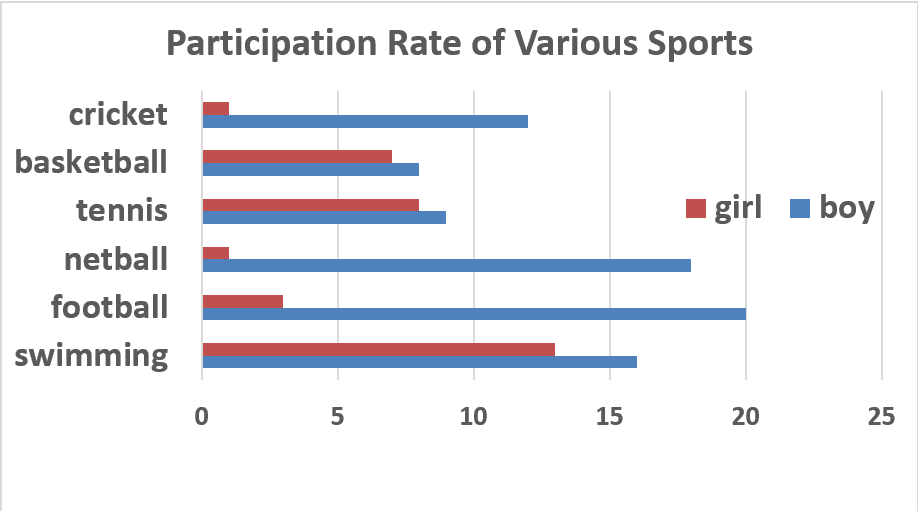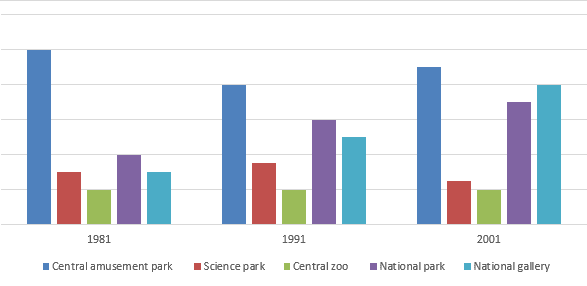托福独立写作重视论述逻辑,因此文章结构是否合理将很大程度上关系到大家的作文得分。今天小编给大家带来了托福独立写作文章结构布局高分思路讲解,希望能够给帮助到大家,下面小编就和大家分享,来欣赏一下吧。
【实用经验】托福独立写作文章结构布局高分思路讲解
托福独立写作总分总结构很LOW吗?
说到托福写作的结构,曾有考生问过ETS官方,说中国语文的作文是总分总的结构,托福还是这么写会不会太低端了啊?官方给出的回答是,总分总的篇章安排不叫低端(low),而叫经典(classic)。我们都说一个写作题目没有标准答案的范文,但是有一个东西可以说是形成了不成文的规定的,那就是一篇好的作文一定是有头有尾、中间细分几段论证的,这一点可以从很多官方给出的范文或是学生的高分文章中得到证实。
托福独立写作到底应该写4段还是5段?
另外,很多考生还存在疑问的一点在于到底一篇文章是写四段还是五段,在小编看来,两种结构各有利弊所在。一般写4段式的同学都是因为主体段只能想出两条理由,实在是想不出第三条理由,只能以1+2+1的结构完成文章。大家都知道一般来说要想拿到不错的分数,一篇新托福议论文需要写到400字左右,那么,如果主体段只写两段,势必需要考生在这两个段落的论证细节上写出更多的内容,否则字数撑不到那么多,而这一点对于很多考生来说恰恰也是很有难度的。相反地,如果写成5段式,貌似就需要考生能想出3条理由进行论证,但事实是,很多考生根本想不到3点理由,能想出2点已经是绞尽脑汁了。在这种情况下,怎么做才是最简易、最轻松的应对办法呢?
小编比较建议大家写5段式的文章,但主体段并不是上文所说的3个理由段,而是采用2+1的模式,即两个理由段,再加一个让步段。关于理由段的写法,将在下文详细分析,在此先重点解释一下让步段到底是什么意思。“让步”字面意思是退一步,那么放到我们作文里,意思就是承认一下反方的观点。西方的文章不太喜欢作者全篇一味强调自己观点的正确性,而是需要作者能适当回应并评价一下反方的观点,这样的文章看起来会更加有说服力。当然,广大考生需要注意的是,小编这里提到的“承认反方观点”
指的是“弱弱地承认”,承认过后必须再削弱回去或者说再驳斥回去,只有这样才能更强调出本文观点的准确性,否则读者看起来会有confusion, 也就是为什么一会儿支持自己的观点,一会儿又支持反方观点。
托福独立写作合理结构分配建议
总结一下,笔者推荐的新托福议论文结构为1+3(2+1)+1的模式。第一段总起全文,导入话题并给出本人观点,主体段前两段为理由段,想出两条理由论证正方观点,主体段第三段为让步段,先承认反方观点的合理之处,再削弱此观点,最后一段为总结段,重申本人观点,再做适当的展望。
托福写作模板:大一新生是否需要上课提升学习能力
题目:A university recognized that first-year students have poor study skills. It is believed that the best way to address this problem is to require all first-year students to take courses on study skills, while others don’t agree with this requirement. What is your opinion?
范文1:Argument 1 (for)
Some people may think that requiring first-year college students to take courses to improve study skills is a waste of time, but I think it is a good way to ensure that students can cope with the college’s requirements. If the students do not have the needed skills already, teaching them as a class is the most efficient method to bring students to the correct level and allow the regular classes to progress at a faster pace.
If students do not have the required study skills when they enter college, they probably are unable to learn those skills on their own. Students need to find appropriate resources for research, develop organizational skills to balance homework and test study time, and learn acceptable formats for writing papers and giving presentations. These are not naturally acquired traits. As with any other subject, it is easiest to learn these things when they are presented in a clear, logical way by a trained professor. If the skills are not taught, the student may not even know what is missing, so will never even think to find out on his or her own.
In addition to providing foundational skills, an introductory study skills class can highlight the special requirements of and opportunities available at the college. For example, my high school taught Chicago bibliography structure, and I thought I was ready for college. However, my college requires that all papers be written in APA format. I needed to learn the APA style, and a basic class would have been very useful. In addition, my college has a fantastic computer resource lab with programs for making charts and graphs with complex data. I did not even know the lab existed during my first year, something I could have learned in an orientation study course.
The result of having all students take a study skills class is clear: regular classes can progress more smoothly. The regular faculty does not have to waste time instructing on points such as APA format that should already be known to the students. The students will all be able to keep up because they are organized; class time is not wasted completing things that should already have been done. Students can finish projects using all the resources available rather than trying to solve a problem without the proper equipment.
Therefore, a college would be wise to require all first-year students to take a basic study skills course. The students can learn things they would not find out on their own, find out about resources at the college, and prepare for a smoother class experience.
to bring students to the correct level 使学生达到标准水准
These are not naturally acquired traits. 这不是自然习得的特征
as with X 正如X, 和X一样
foundational skill 基本技能
regular classes can progress more smoothly 普通课程可以进展地更顺利些
be able to keep up 能够跟得上
范文2:Argument 2 (against)
Requiring all first-year students to take an introductory study skills class is a waste of time and money for both the college and the students. It is not fair to advanced students who have alreadyinvested the time and energy to acquire good study skills, so an alternative program should be offered.
Although at first glance a study skills class may seem like a good idea, setting up such a course is a considerable investment for the institution. If all incoming students are required to take the class, many teachers and classrooms must be available for the program. For the program to be successful, the teaching materials should be consistent, so someone needs to develop the course and train the teachers in the best way to deliver the content. This investment of time, space and money could be better spent elsewhere.
Not only is a special class expensive for the university, it is also expensive for the students. Every student can only take a few classes per term, so making one of them a study requirement means that the student has less opportunity to pursue specialized classes needed to succeed in the working world after graduation. This investment of time and money is particularly unfair if the student already has the study skills necessary to do well. In fact, such a requirement might even make more advanced students consider attending a different university because they do not want to pay for something they do not need, lowering the overall level of student at the university.
A better alternative to a study skills class would be to provide each incoming student with a handbook listing the resources available at the school. Students who need extra training could go to a study lab with tutors or go to listed internet websites or chatrooms. Students can learn at their own pace and take advantage of whatever resources they need; students who do not need help are not held back in any way. The tutors could be upper-level students who are on a work-study program, which would cost the university significantly less than paying full-time professorial stafffor a special class.
Requiring all freshmen to take a study skills class is a waste of time and money for the students and institution, so it would be better to offer alternatives that target the specific skills that individual students need to learn.
invested the time and energy to do 投入时间和精力去做
an alternative program 备选方案
at first glance 乍一看
incoming students 即将入学的学生
the overall level of student 学生的整体水平
hold back 阻止,抑制
full-time professorial staff 全职教授级职员
托福写作模板:如何提升演讲能力
题目:
After your presentation, which way would you choose to identify your weakness and improve your presentation?
1) reviewing the recording on your own;
2) inviting your colleagues or classmates to make suggestions for improvement.
范文1:For Choice 1
To improve my performance after giving a presentation, it is best to review a recording of it by myself. This process lets me observe all aspects of the presentation, evaluate changes at my own pace, and avoid being defensive.
First, a video recording gives significantly more information than just relying on comments made by colleagues or classmates. I can analyze and improve on even small points that others may not have noticed or found worth mentioning. For example, a couple years ago, I gave a presentation that I had extensively prepared for. It had strong organization and flow. Classmates raved about the content, but mentioned that I looked scared. I was confused, because I had felt confident. However, I noticed in the video later that I was continually fingering my notes. For my next presentation, I placed the notes within view but did not hold them, rendering my appearance more professional.
Another reason I prefer watching a recording is my pace of learning. I can focus on the points I want to redo, replaying the material as often as I want, confirming even tiny details. In fact, I can even take long breaks to think about what I see or to try out alternate delivery styles. I do not have to inconvenience my friends by asking them for feedback or taking up their time. If others are involved in the evaluation process, I feel much more rushed because I do not want to bother people who have agreed to help me.
Finally, reviewing a recording by myself eliminates a serious problem that hinders progress: my pride. I do not like to admit it, but I often get defensive about feedback and want to explain why certain things happened. I feel resentful about negative comments rather than see them as stepping stones towards improvement. It is a natural tendency, but it definitely hinders my ability to assimilate outside feedback. Furthermore, friends try to be polite, so they may not mention minorpoints that I might have improved because they don’t want to seem too critical. Emotions get in the way of a thorough critique.
To improve my future performance, I find it best to review videos of my presentations by myself. I can evaluate all aspects of the presentation, take as much time as I need, and avoid the inevitable problem of emotional involvement swaying the critique.
at my own pace 按照自己的步伐走
rave about the content 对内容赞不绝口
place the notes within view 把笔记放在眼前,把笔记放在视线范围内
inconvenience my friends 麻烦我的朋友
take up their time 占用他们的时间
see them as stepping stones towards improvement 把它们看作是迈向进步的垫脚石
get in the way 妨碍,阻碍
范文2:For Choice 2
It is essential to get the feedback of people in the audience to learn about mistakes and improve on a presentation. Spectator critiques help identify the big picture and reveal points that you can’tsee in an honest, unbiased way.
No matter how impartial you want to be, a self-evaluation is biased. It incorporates points that are not relevant to the performance you gave. For example, you may think you did excellent given your limited practice time or great amount of stress, but your audience is unaware of these factors. The viewers only evaluate what they see, which is a far more accurate measure of a presentation. A self-evaluation may also ignore issues that were “just accidents.” However, such points may reallybe important detractors that need to be addressed.
People in the audience also provide insight into the big picture. They only have time to note specific glaring details or outstanding highlights. Otherwise, their feedback gives you the overallimpression of the performance, which is something intangible and essential to the presentation’ssuccess. If you compare the feedback of several observers, you can isolate the main patterns. As a result, you can understand the most important parts that need changed. If you only refer to a video on your own, you may get caught up changing minor details rather than addressing the key elements that are needed to alter the overall flow or lasting effect.
Finally, classmates or colleagues may identify things you take for granted such as mannerisms, repeated words, or even problems with visual aids. One example is a teacher who gave a presentation using an old slide projector that kept jamming. The teacher apologized when that happened and kept going with the lecture. He had no idea how distracting it was, to the point that students remembered joking about which slide would get stuck next better than they remembered the content. The teacher, however, was so used to fixing the projector that he barely noticed it. The feedback showed him the value of replacing his visual aids with newer equipment, an issue he had never considered was important.
Since an audience gives you honest evaluations of the overall impression of a presentation and identifies points you may not see on your own, it is important to get feedback from people in the audience in order to improve your presentations.
spectator critiques 旁观者的评论
in an honest, unbiased way 以诚实、公正的方式
a far more accurate measure of a presentation 对报告或展示一种更为准确的评价
provide insight into the big picture 洞察全局
glaring details 明显的细节
outstanding highlights 突出的亮点
visual aids 视觉辅助





